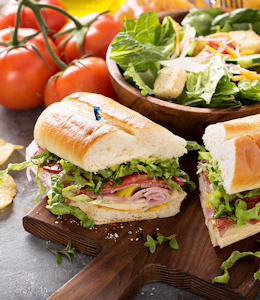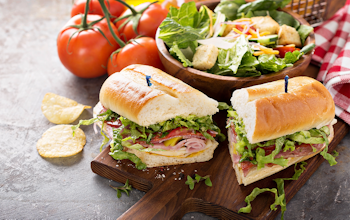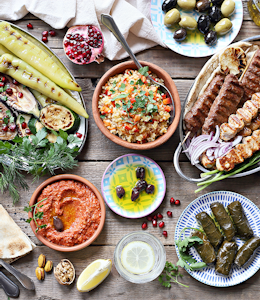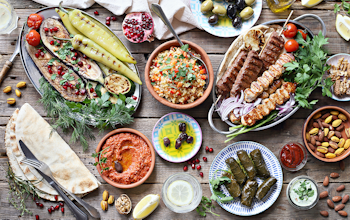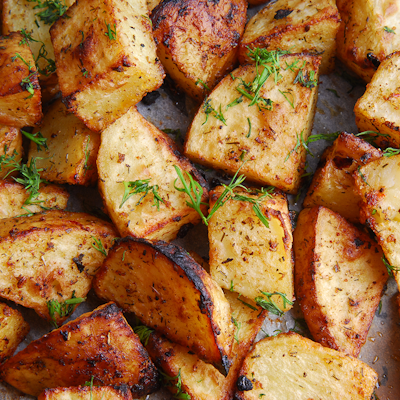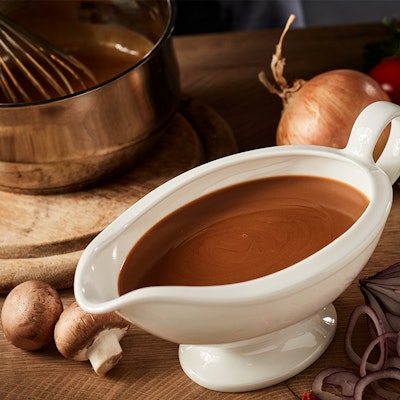Summer seasonal foods in the UK
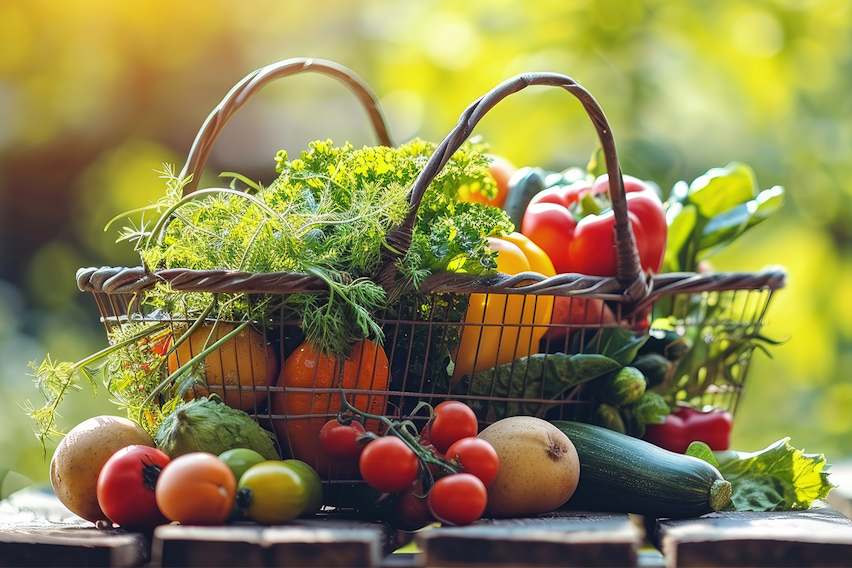
We’ve rounded up the healthy and best summer foods in season in the UK.
The summer foods are:
- Asparagus
- Aubergine
- Beetroot
- Courgette
- Crab
- Cucumber
- Gooseberries
- New potatoes
- Raspberries
- Wild rabbit
- Wild sea trout
- Wood pigeon
Now let’s find out more about them...
Asparagus
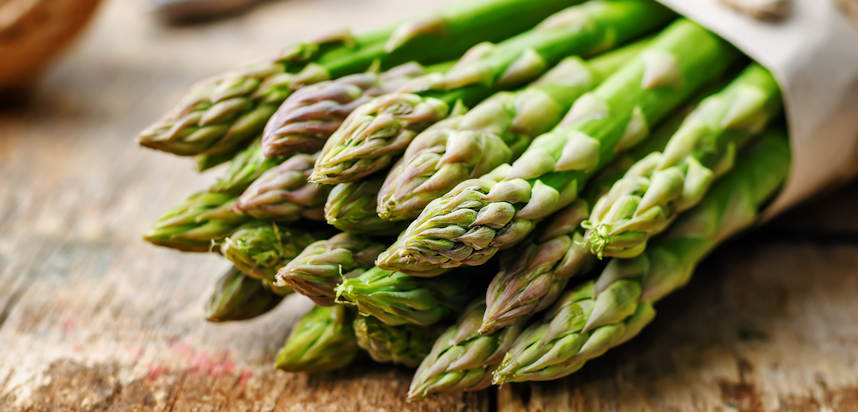
What is asparagus?
Asparagus, mostly grown and cultivated as a vegetable crop, is technically the shoots of the asparagus officinalis, a type of flowering lily plant.
Native to Europe and Asia, its colour depends on the region it has been grown in (green for England, purple for France, white for the Netherlands). A labour-intensive crop, asparagus is both delicate and tender, with a light sweetness and almost buttery texture, with different varieties having slightly different flavour in terms of bitterness.
Though each asparagus shoot or tip is slender and light, its packed with vitamin A, vitamin C, potassium and calcium - and only able to be harvested in a very short window. Asparagus season is brief, running from mid-May until the end of June.
Serving suggestion
In the spring and summer asparagus makes for a delicious salad ingredient, and works particularly well with lightly toasted nuts (such as almonds and walnuts), parmesan, mint and rocket, with a lemon dressing. It can also be added to risotto or pasta dishes such as carbonara - as an addition or a vegetarian alternative to ham or prosciutto.
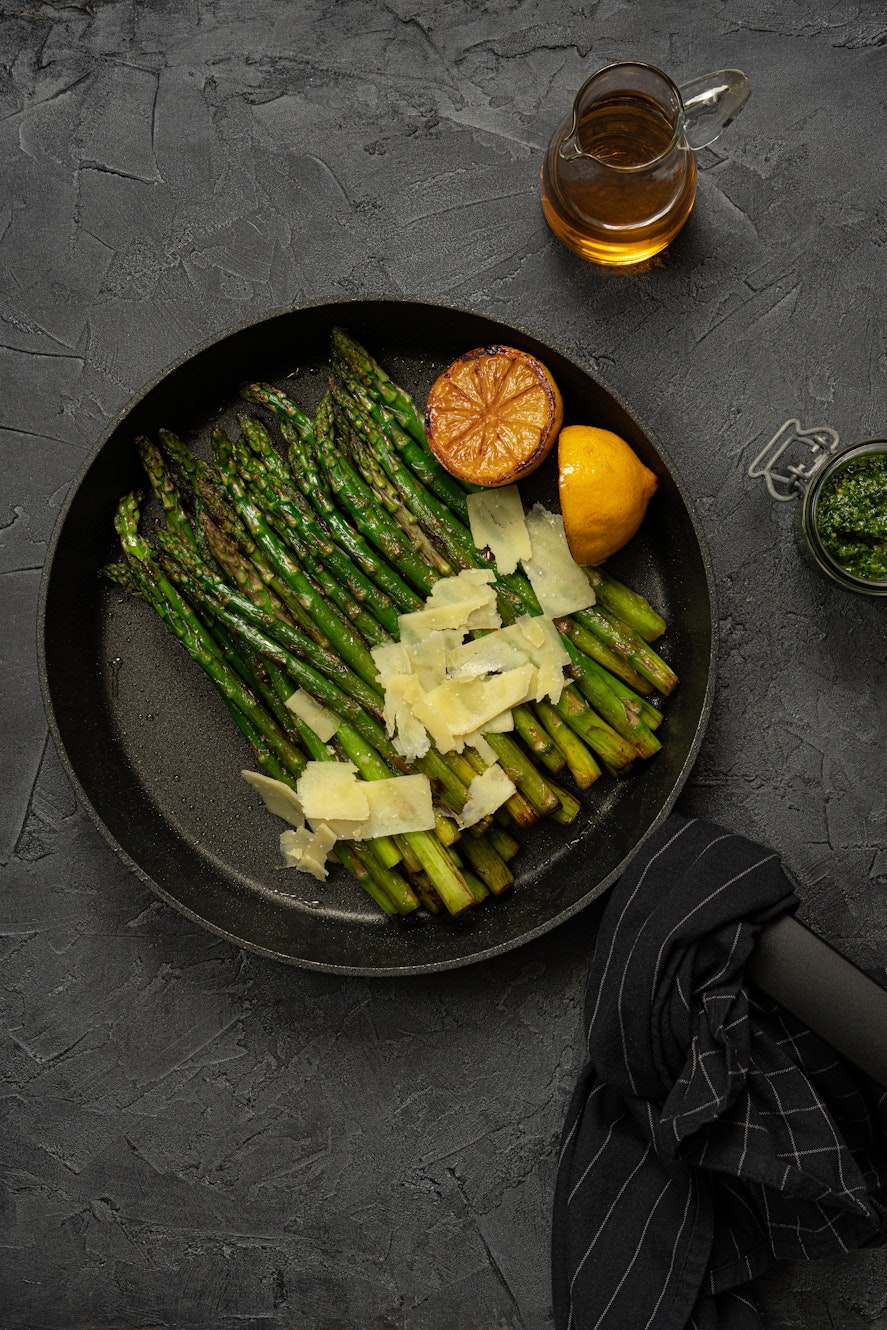
Asparagus that has been wrapped in ham, or baked with a parmesan crust, or even just lightly dressed with oil and seasoning is also a great starter or side dish as part of a larger meal.
Top tip
To avoid overcooking asparagus and retaining the vibrant green hue, after blanching in boiling water for a minute or two, plunge it into iced water and leave for another minute before draining and drying with kitchen roll.
Aubergine
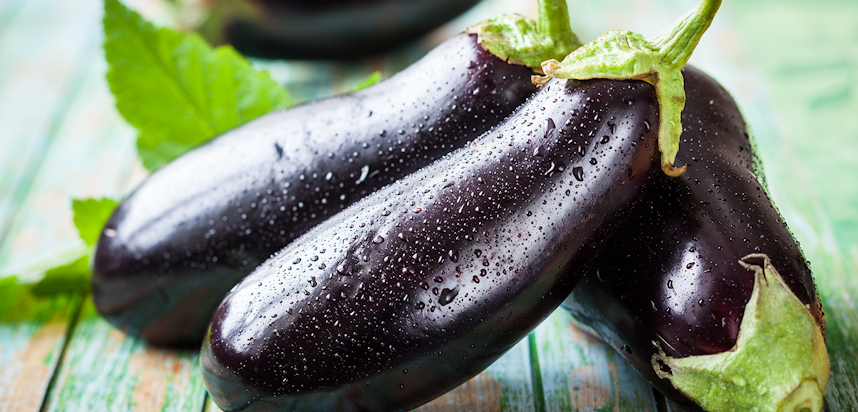
What is aubergine?
The fruit (though botanically a berry) of the plant species solanum melongena, in the nightshade family, aubergine is native to Southeast Asia but grown, cooked and consumed as a vegetable in many cuisines around the world. Known as “eggplant” in America, it has a distinctive deep purple colour, bulbous shape and soft, spongy texture.
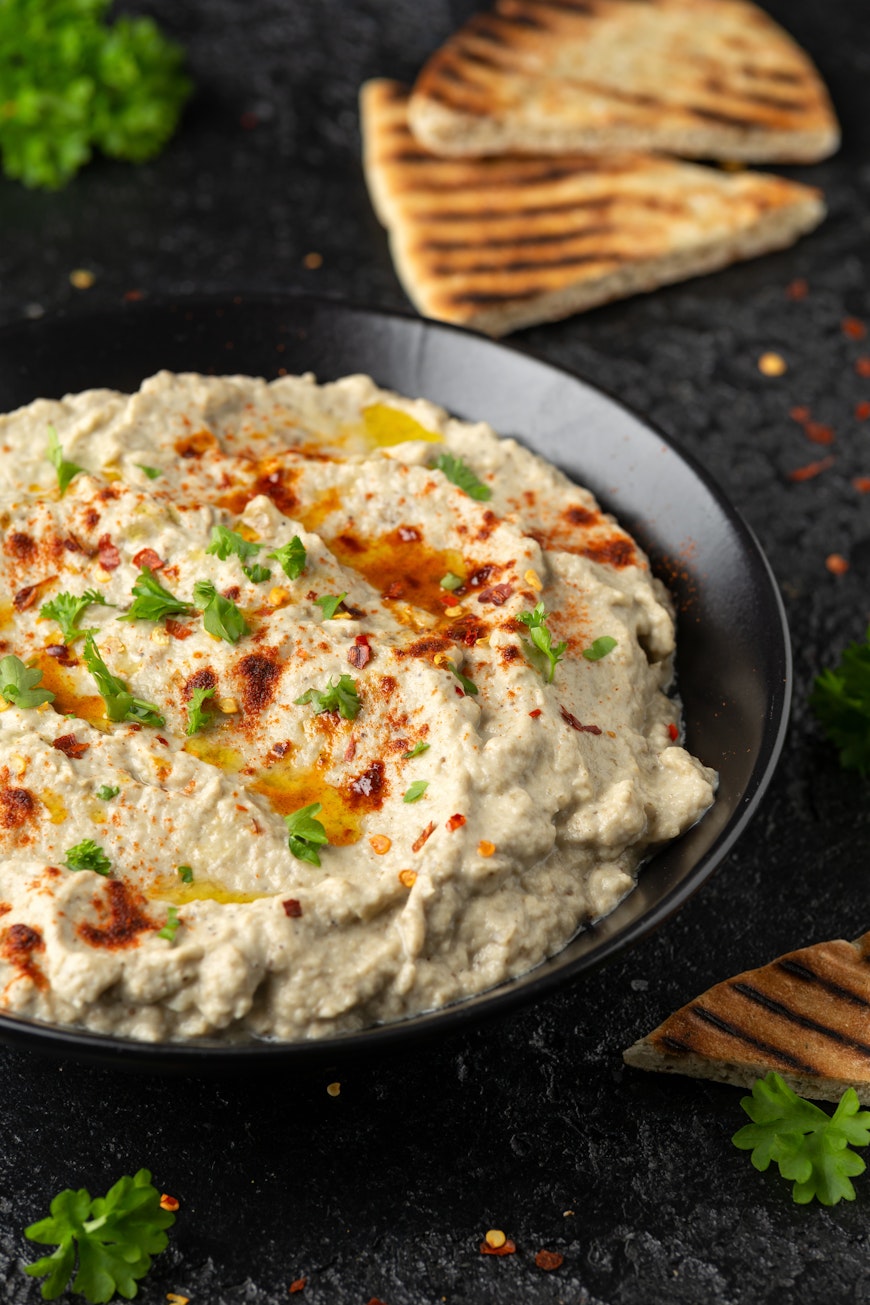
Aubergines have a mildly smoky flavour, a little sweetness and are more delicate and absorbent than their appearance suggests. They’re also high in fibre, low in calories and contain a good amount of the antioxidant nasunin, which promotes health in the fats that protect the brain and give the aubergine its purple hue. Though available all year round, aubergines are in season from May to October - with the peak being July to September.
Serving suggestion
Aubergines are a star ingredient in many Mediterranean cuisine dishes such as moussaka, aubergine parmigiana (aubergine with cheese and tomato) and ratatouille, and they can also be added to curry as a protein option. The smoky Middle Eastern dip baba ganoush is also made using aubergine as the primary ingredient, and is perfect as a light summer snack or starter served with crudites.
You can also serve aubergine alone as a the star of a meal - it can be barbecued, fried or baked, and pairs well with honey, garlic, spices such as cumin or paprika and lemon juice as a seasoning.
Top tip
Aubergine is easy to make mushy if not cooked or prepared correctly. To prevent this from happening, sprinkle salt on both sides of aubergines that have been sliced up to fry, bake or add to other ingredients, and leave for 10 minutes before using. This will keep them firm.
Beetroot
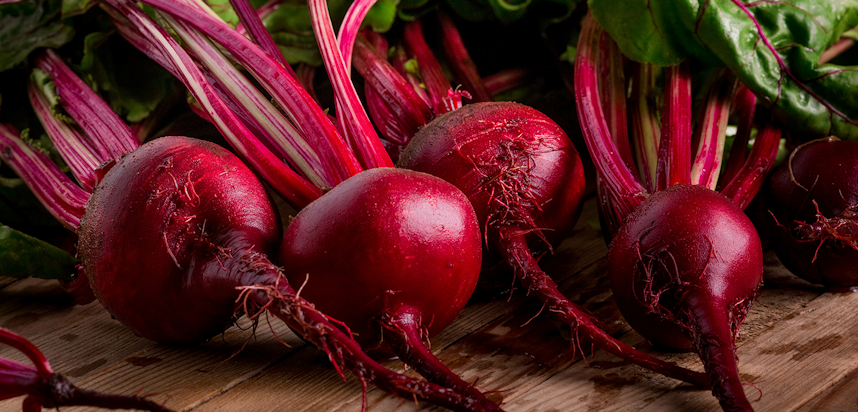
What is beetroot?
What we refer to as beetroot is the taproot of a beet or beetroot plant, and is botanically related to other vegetables such as chard and spinach.
The most characteristic feature of beetroot’s flavour is its earthiness, in addition to a sweetness and tang. It is also juicier than most vegetables. Generally overlooked as a superfood, beetroot is extremely nutritious - rich in antioxidants and nitric oxide that increases blood flow to the muscles and improve athletic performance, as well as folate, which is crucial for the regeneration, growth and functionality of cells.
In the UK beetroot season runs through May to September, with the peak of June-August providing the tastiest beets.
Serving suggestion
Beetroot is a surprisingly versatile food - you can use it for every course of a meal if you wish - beetroot soup to beetroot with pasta, feta and mint followed by beetroot chocolate cake.
Beetroot can be roasted alongside other vegetables and seasoned with dill or parsley, boiled and served with meat, or pureed and added to smoothies or to flavour hummus.
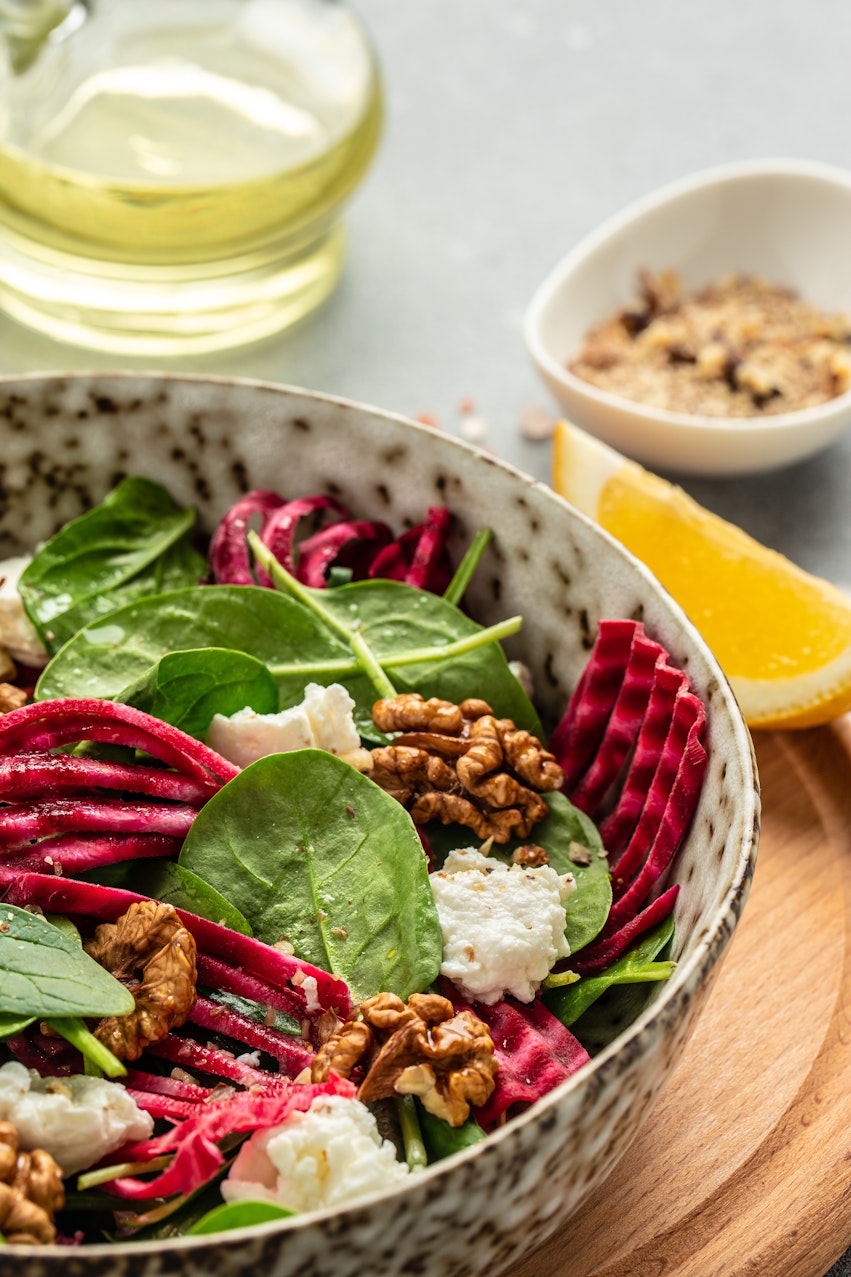
Beetroot that has been cooked and then pickled in vinegar was hugely popular in the UK during the mid-late 20th century and has seen a resurgence as pickled and fermented foods have gained prominence in the media and popular culture.
Top tip
For tender beetroots that don’t bleed (and can be later used for other dishes), add a small amount of vinegar or lemon juice to the water they are being boiled in. Once they have been brought to the boil, allow to bubble away for 45 minutes before draining.
Courgettes
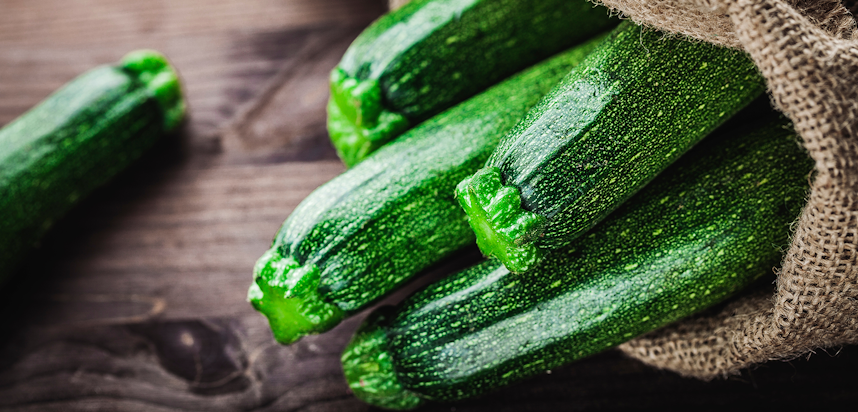
What are courgettes?
Known as “zucchini” in North America, courgettes are closely related to marrows, and are a variety of cucurbit, a botanical family which also includes cucumbers, squash and melons.
Courgettes are the fruit from a vining herbaceous plant, and harvested when their immature seeds are still soft and edible.
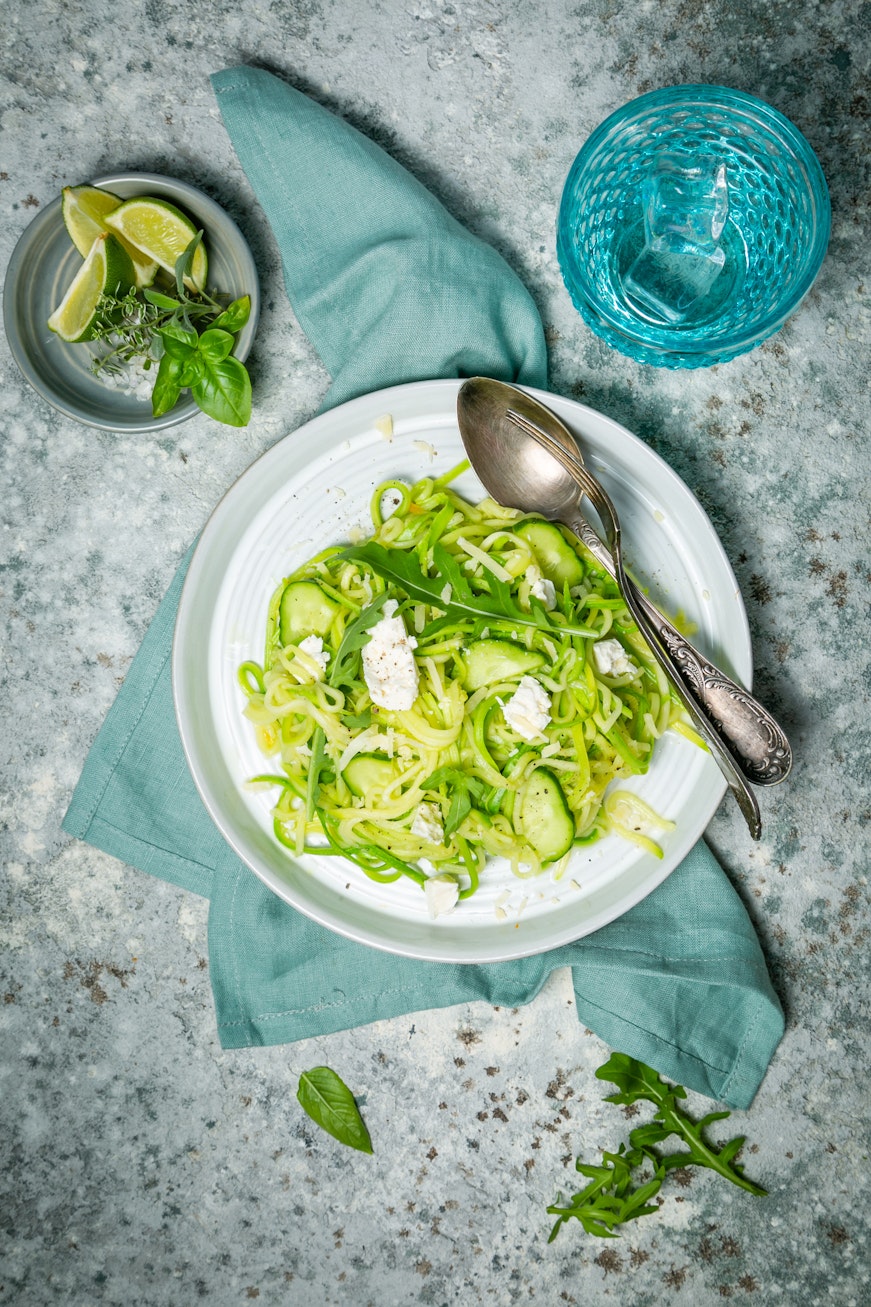
One of the most delicate “vegetables”, courgettes have a subtle flavour with a slight sweetness and are very good at absorbing the flavours of other foods they are cooked with or in.
Because of their high water content, courgettes are very low in calories, and they also contain vitamin C, as well as potassium - which improves muscle health. These nutrients are higher in concentration when the courgette is eaten raw. Courgettes are generally available throughout the year, but at their best from early summer to mid-autumn, so June to October.
Serving suggestion
Courgettes are a great ingredient for salads - they add bulk without being too overpowering, and will soak up all the lovely flavours of a dressing. They can also be added to pasta dishes, stir fries, and as a meat replacement in vegetarian lasagne.
Because of their lightness, courgettes are also good for coating in a flour-based batter and deep-fried to make fritters.
Top tip
Whilst courgettes can be fried, roasted and even barbecued, you should not boil them like you would other vegetables. Boiling them will merely make them mushy and flavourless.
Crab
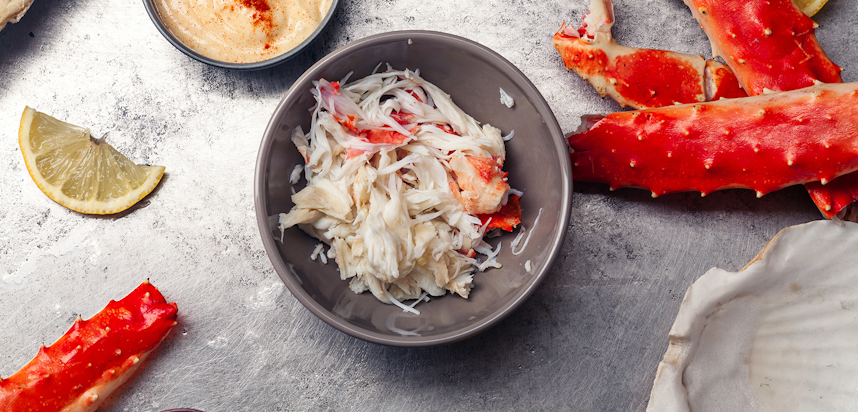
What is crab?
Crabs are classed as decapod crustaceans, and eaten for their meat, which comes in two types - white and brown. White crab meat comes from the body and claws, whilst brown meat is from their main shell.
Crab meat, which is both served intact (as in the case of crab legs) or removed, chopped up and served with other ingredients, has a delicate, almost sweet flavour - although the brown meat is richer and more savoury. High in protein, crab is also rich in the good, Omega-3 fatty acids and other vitamins and minerals such as B12 and selenium, which supports the immune system and metabolism. In the UK the best season for crabs runs between April and November, when the meat is likely to be at its best.
Serving suggestion
There are several famous dishes in which crab is the star. Among them are crab cakes (where crab meat is combined with breadcrumbs and other ingredients such as mayonnaise, spices and mustard before being deep fried or grilled), crab linguine and California rolls (a type of inside out sushi made with crab or imitation crab, avocado and cucumbers).
Crab can also be added to salad as a protein, blended with other ingredients into a pate or simply cooked and served with melted butter and lemon.
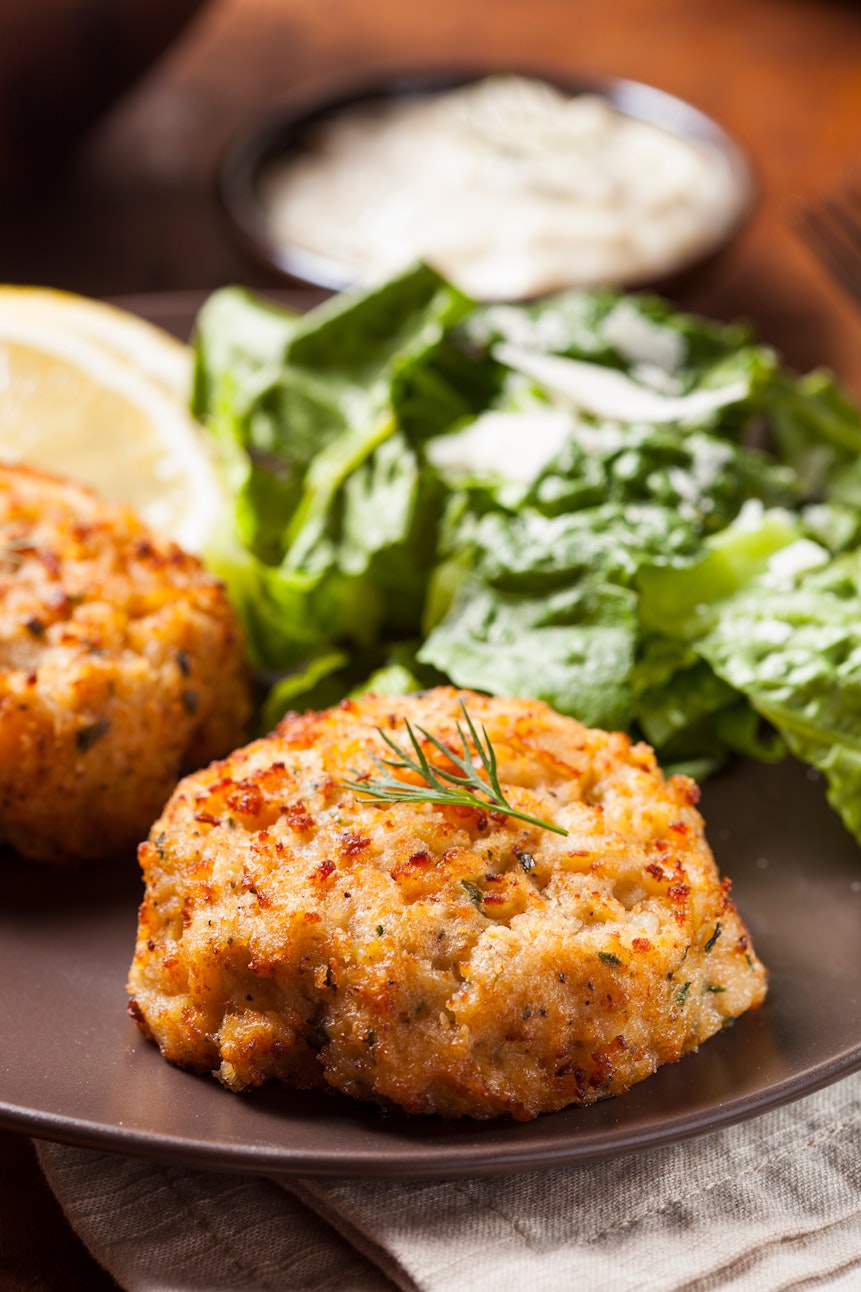
Top tip
Looking for the juiciest crab meat? Go for the claws - it’s where the most muscle is, and therefore the meat is juicier.
Allergy alert!
Crabs are a Crustacean, one of the 14 major food allergens. You can find out more about a Crustacean allergy here.
Cucumbers
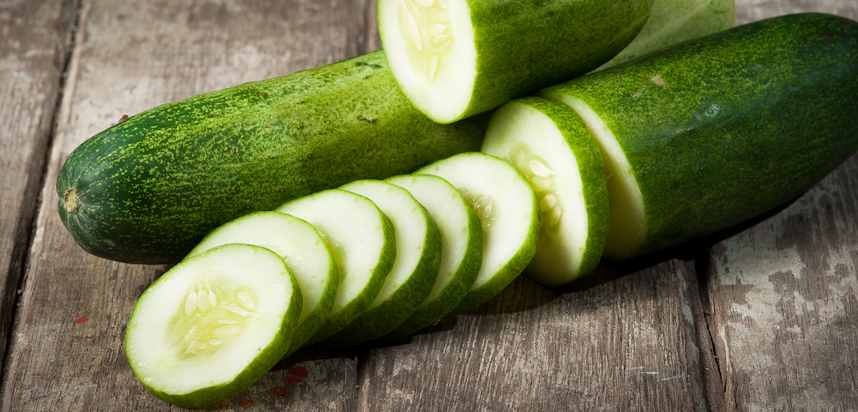
What are cucumbers?
Cucumbers are the fruit of a creeping vine plant in the botanical family Cucurbitaceae, though they are cooked and consumed more as a vegetable. Cultivated widely, and considered an annual plant, you can get different varieties of cucumber better suited to pickling or eating raw.
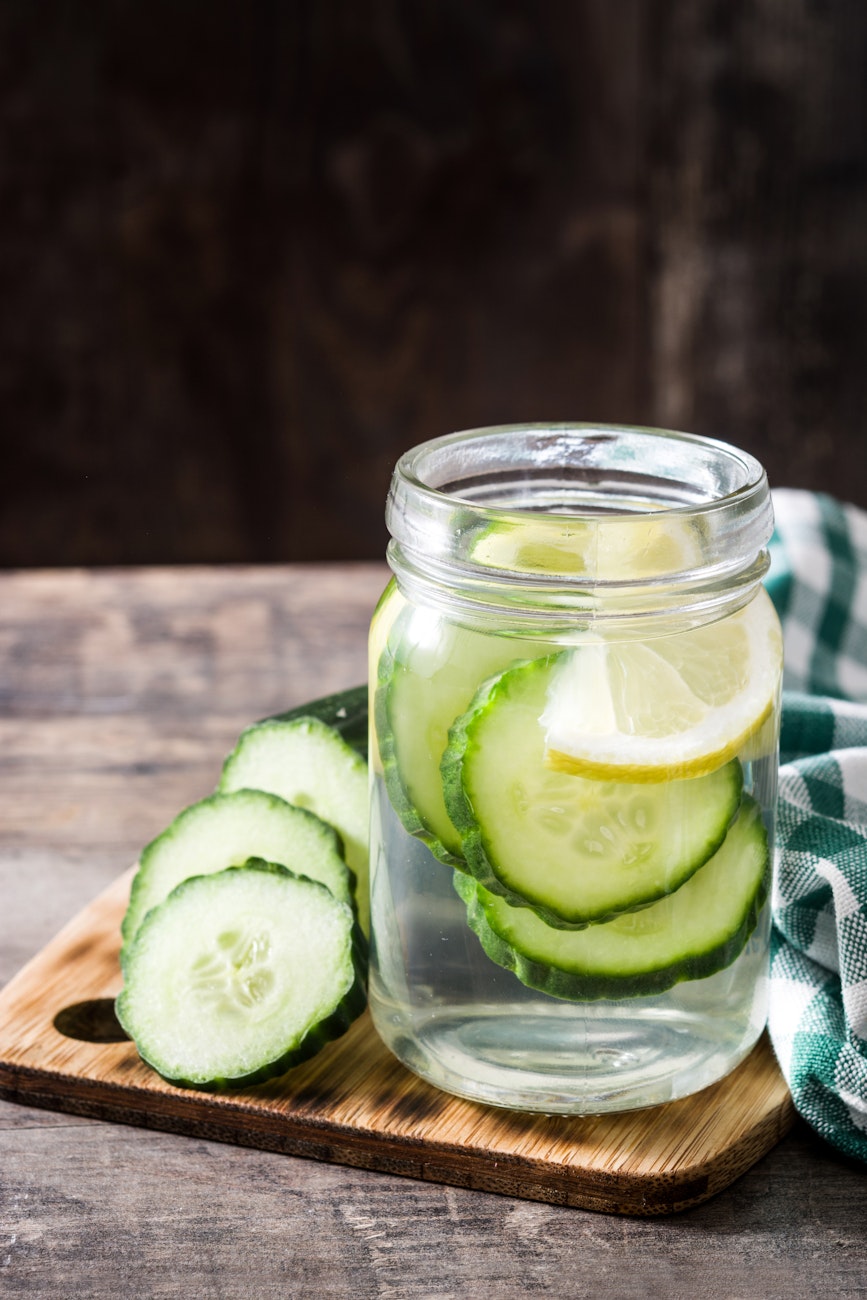
With a high water content, cucumbers have a fresh flavour and are known for their coolness and crunchy texture. In addition to being a very low calorie food frequently used for weight loss and management, cucumbers also contain potassium and magnesium, and are thought to help reduce blood pressure.
High summer is peak season for cucumbers, with them ripening from June onwards. The use of a greenhouse can extend this.
Serving suggestion
Cucumbers are hugely versatile and always handy to have around. They are frequently used in salads, particularly Greek salad, and as a garnish for other dishes.
After blending they can be used to make cold soups like gazpacho (in which they’re pureed alongside tomatoes, peppers, onions and garlic), or dips like tzatziki (in which the cucumber is mixed with yoghurt, garlic, herbs, lemon juice and olive oil).
Finely sliced cucumbers are used to make finger sandwiches, a British summer delicacy, and can also be added alongside strawberries, orange and other fruit to beverages like Pimms, punch and juice.
Pickled cucumbers, also known as gherkins, are also extremely useful - used on burgers, in sandwiches, as a garnish or even a bar snack.
Top tip
Cucumber-infused water isn’t just pretty, it actually makes water even healthier - its potassium content helps to lower blood pressure.
Gooseberries
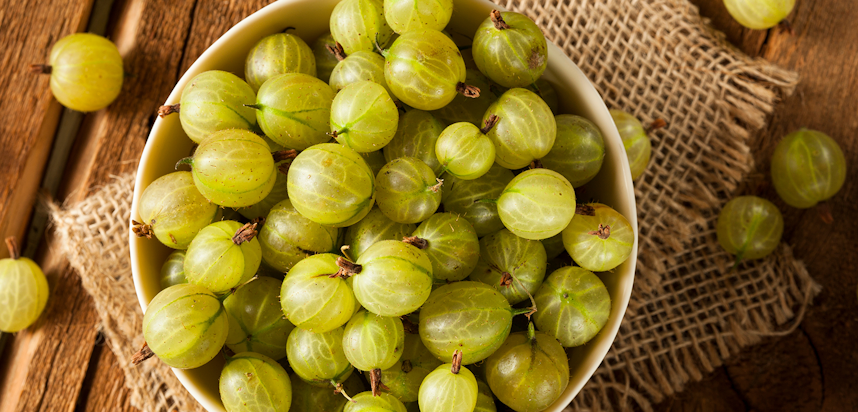
What are gooseberries?
Gooseberry is the umbrella name for the berries of many species of flowering Ribes plants, and though commonly associated with the colour green (indeed, early in the season they will always be bright green), later they can also be orange, purple, red, yellow, white or even black.
Popular in the UK as far back as the Elizabethan era, their flavour depends on how ripe they are - with early gooseberries being tart and sour, developing sweetness as they ripen.
Rich in fibre and low in calories, they’re an excellent choice of fruit for weight management, and are also full of vitamins and antioxidants.
Early, tart gooseberries can be eaten from mid-May, and the season runs to September, with the berries being at their best around July.
Serving suggestion
Gooseberries can be used for a more unusual twist on many traditional British desserts, such as crumble, tarts and gooseberry fool (in which it is mixed with cream and yoghurt).
Gooseberry can also be mixed with sugar and cooked and reduced down to make jam or compote, or to infuse spirits such as gin.
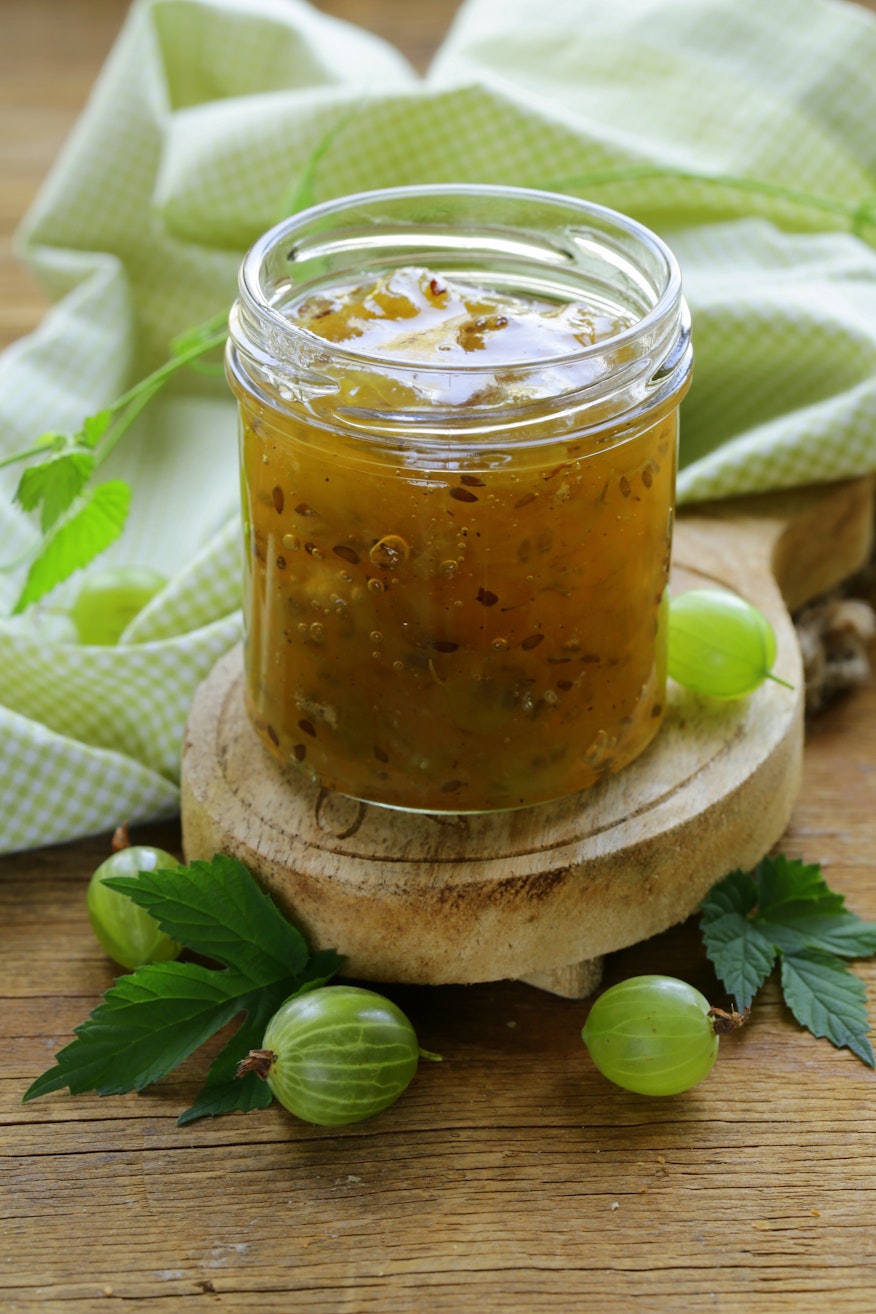
Top tip
Gooseberries pair surprisingly well with cheese, their sharp sweetness complimenting creamy, crumbly cheeses such as Wensleydale.
New potatoes
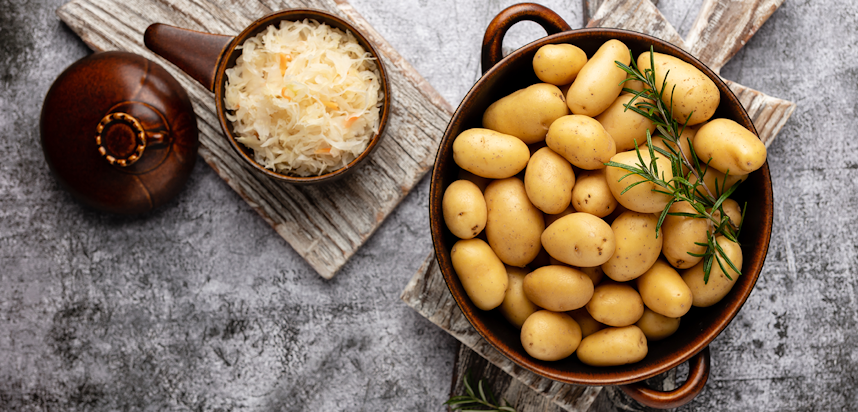
What are new potatoes?
New potatoes are essentially just small potatoes (of various potato varieties) that have been harvested when the crop is young. This means that they are sweeter and more tender than larger and more mature potatoes, with flakier skin rich in vitamin C (in fact, the skin of new potatoes contains more vitamin C than many fruits).
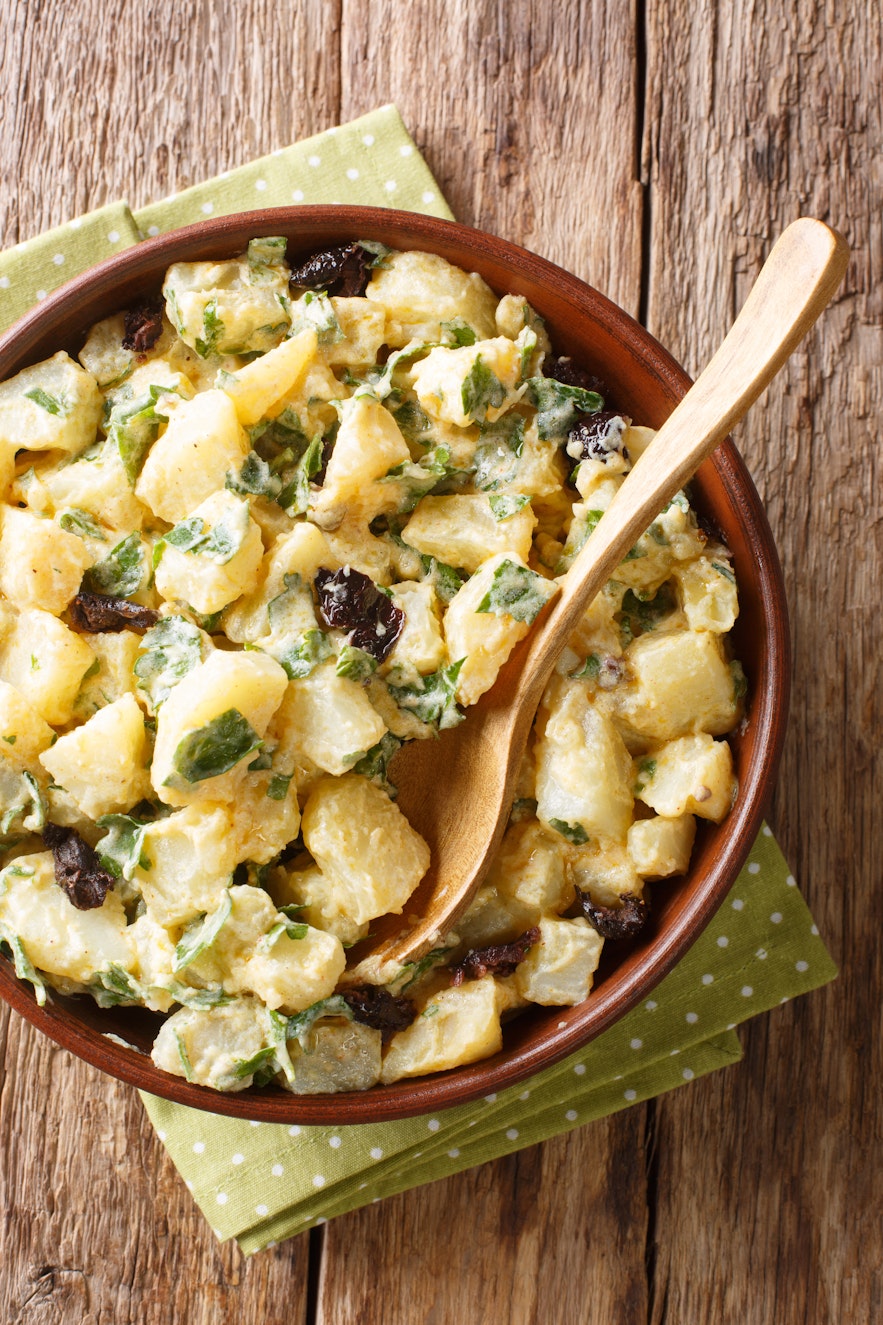
The sweetness of new potatoes comes from the fact that their sugar content has not yet been converted into starch, which makes them lighter than other carbs. They are also rich in potassium, which contributes to the health of major body organs, muscles and the nervous system.
New potatoes can be harvested from June through to August.
Serving suggestion
New potatoes are particularly suited to salads, either as the base for potato salad or added to other ingredients such as a leafy greens.
As a side dish new potatoes need little accompaniment - after boiling or roasting with oil, simply add butter and fresh herbs.
Top tip
New potatoes make for a fun barbecue dish - simply par-boil then drain and leave for a couple of minutes before coating in olive oil and your preferred seasonings and wrapping tightly in foil parcels. The parcels should be barbecued for around 10 minutes.
Raspberries
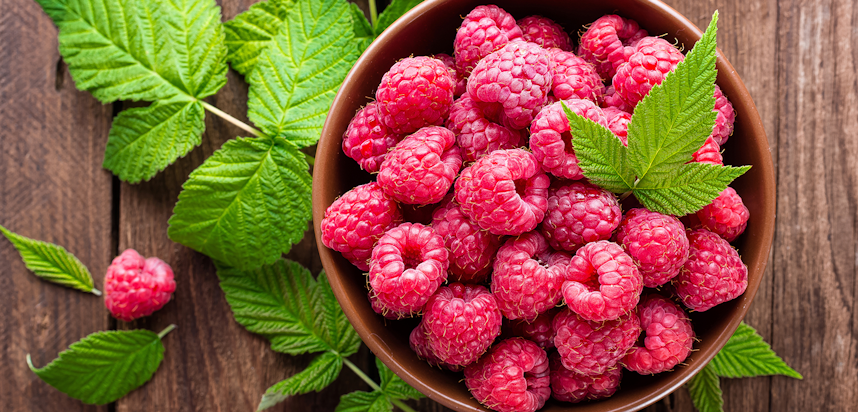
What are raspberries?
Technically not a “berry” (like strawberries, raspberries come from a plant with a single flower with more than one ovary and are defined as an aggregate fruit), raspberries are the fruit of multiple plants in the rose family.
Known for a sweet yet tart taste, the flavour of raspberries is more intense the riper they are, and they also have a distinctive fruity, floral scent. Nutrition-wise, raspberries like other fruits contain vitamin C and antioxidants such as quercetin and gallic acid. They’re also rich in ellagic acid, a known chemopreventative, thought to be an excellent anti-inflammatory.
Raspberries are a summer fruit, with the first of the season harvested in June and the final around mid-September.
Serving suggestion
Raspberries are perfect for summer desserts such as raspberry fool (with cream), raspberry crumble and raspberry sorbet.
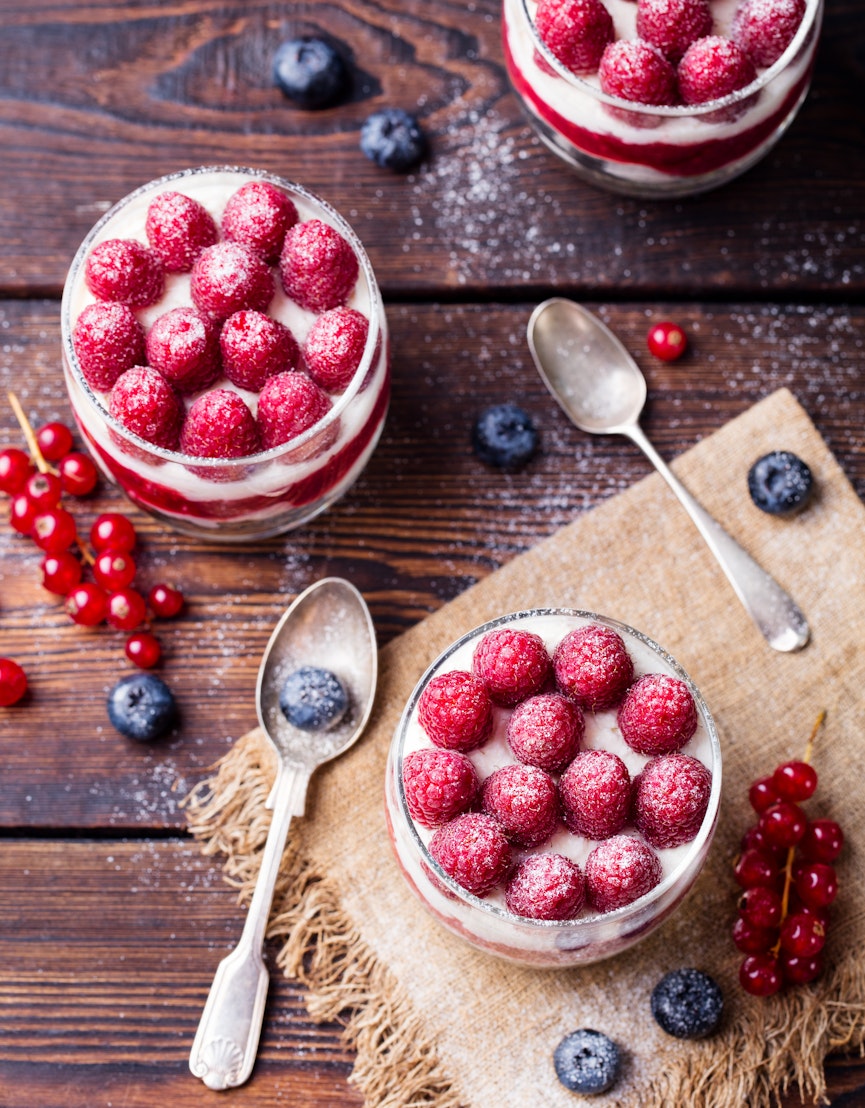
Raspberries are also a popular ingredient for baking - pairing particularly well with white chocolate in goods such as brownies, blondies and cookies.
If you have a glut of raspberries you can boil them with sugar to make jam, or use them to top a glass of champagne or prosecco.
Top tip
The tartness and sweetness of raspberries goes especially well with the flavour of ginger - worth bearing in mind when making everything from raspberry compote to raspberry cookies.
Wild rabbit
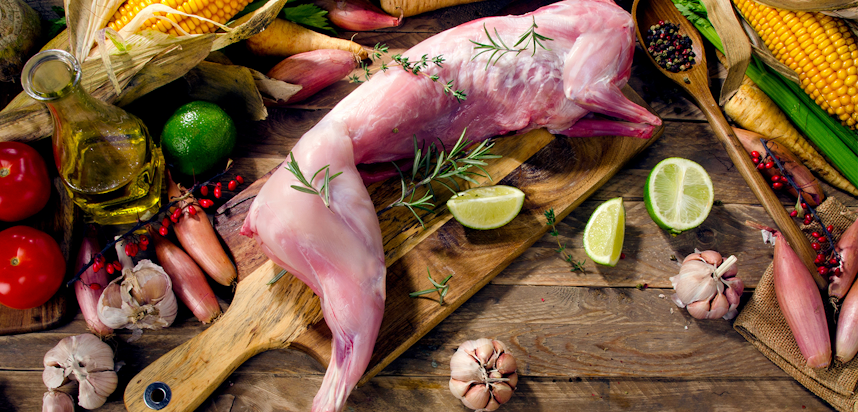
What is wild rabbit?
Wild rabbits are smaller than the majority of domestic rabbits and have meat that is lightly gamey and a bit like chicken - though with darker meat, owing to the defined muscles that the rabbits get from running around.
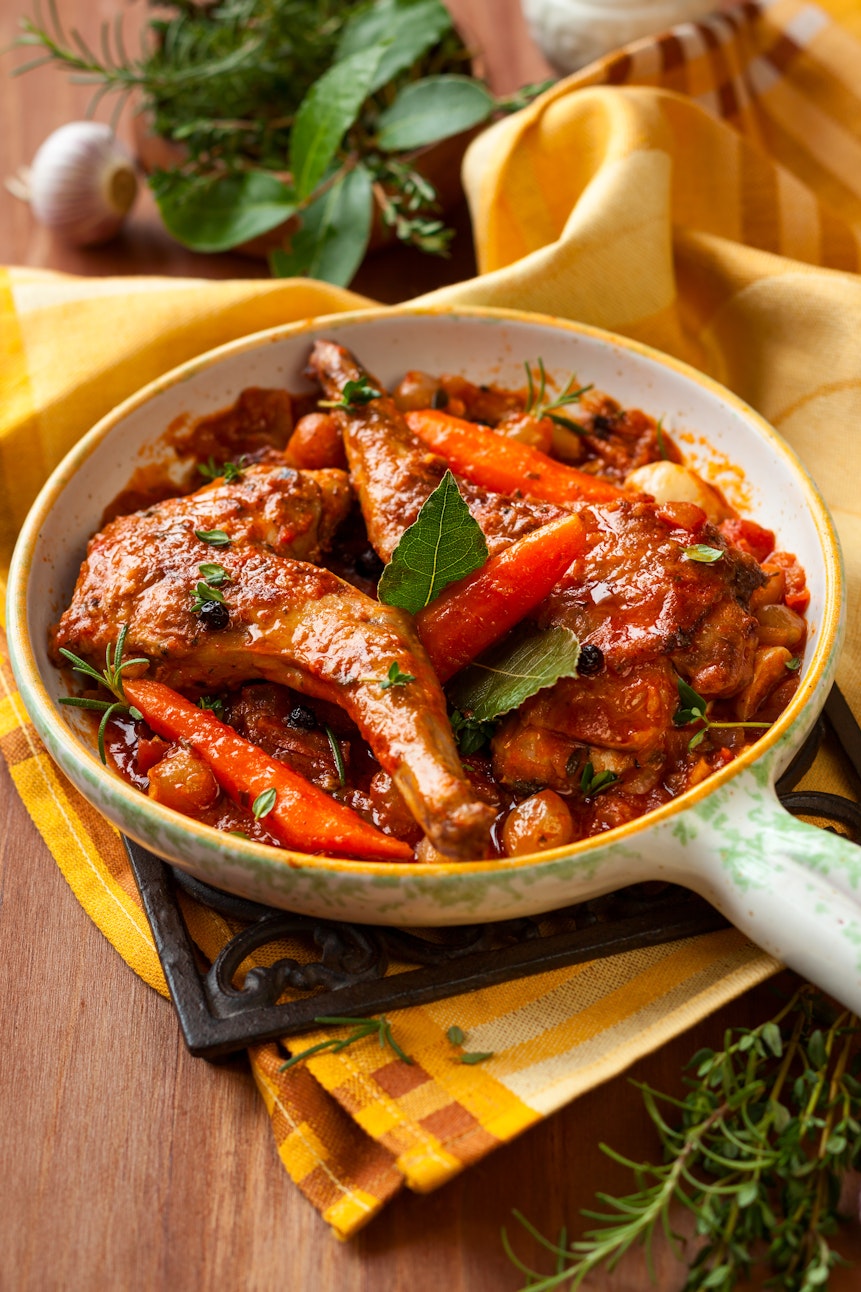
Naturally free-range and without antibiotics, wild rabbit meat is high in protein and very low fat. It also contains B vitamins and selenium, a mineral thought to improve heart health and even reduce the risk of some cancers.
Whilst game season in the UK starts on 12 August and wild rabbit is fully matured around then, it is ready to eat a month or so earlier.
Serving suggestion
Because of the developed muscles, rabbit meat can sometimes be on the tough side, which means it is best in slow-cooked dishes such as stew, with ingredients such as carrots, garlic, red wine, herbs and even fruit such as apples and prunes. As a main dish you can also brown rabbit meat in a frying pan and then slowly roast in duck fat, and serve with mashed potatoes and redcurrant gravy.
Top tip
If you’re working with very mature or older rabbit meat you should cook alongside a cured pork like bacon or chorizo to improve the flavour.
Wild sea trout
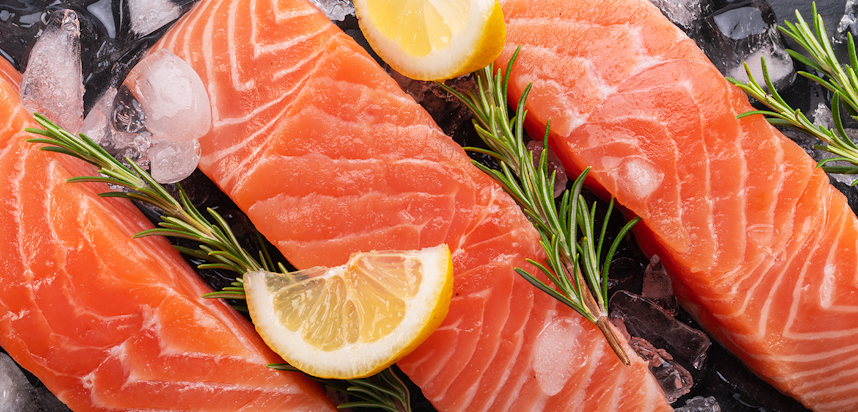
What is wild sea trout?
Wild sea trout is a silvery grey fish that feeds on small crustaceans, and migrates up river from the sea when it is time to spawn. It is fished from rivers, with the Southwest of the UK having some of the best for this purpose.
Wild sea trout is unlike the common, farmed trout that is widely available, and has a flavour more in common with that of wild salmon, with a clean, bright and delicately gamey taste.
As an oily fish, wild sea trout is rich in healthy Omega 3 fatty acids, which are great for heart health, skin health and the growth of hair and nails. Wild sea trout are best in August.
Serving suggestion
Wild sea trout is a great choice for fish stew, and can also be served as the main part of a dish by pan-frying, grilling, or cooking in parchment (en papillote). Additionally, it can be barbecued in tinfoil, though you should check on it frequently to avoid overcooking.
Wild sea trout can also be eaten raw - so long as it’s cured, smoked or served with lemon juice to create a ceviche.
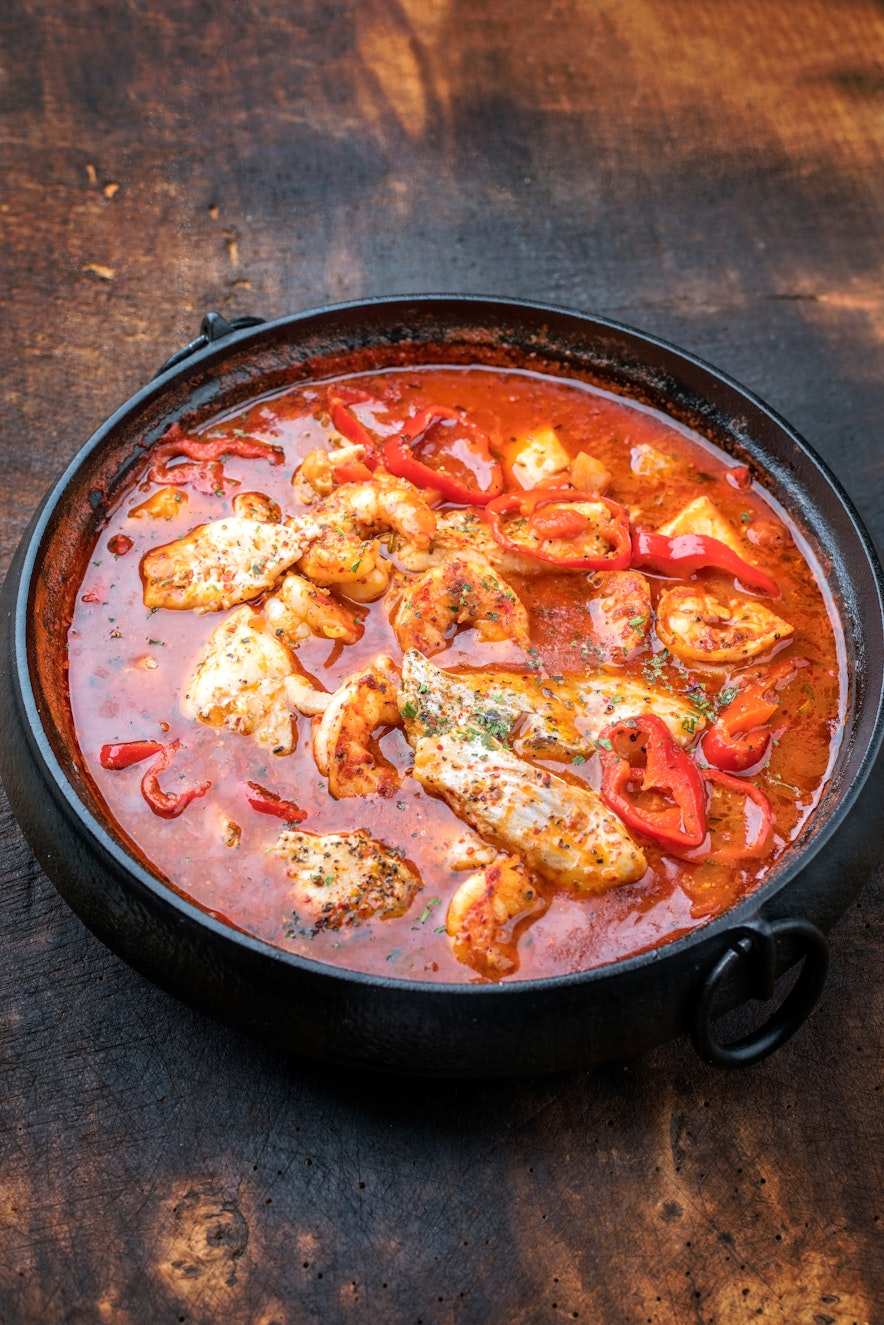
Top tip
When pan-frying wild sea trout, the pan should always be preheated so that it is smoking hot before adding the fish. This will ensure a golden crust and avoid over-cooking the fish flesh.
Allergy alert!
Wild sea trout is a Fish - and therefore one of the 14 major food allergens.
Wood pigeon
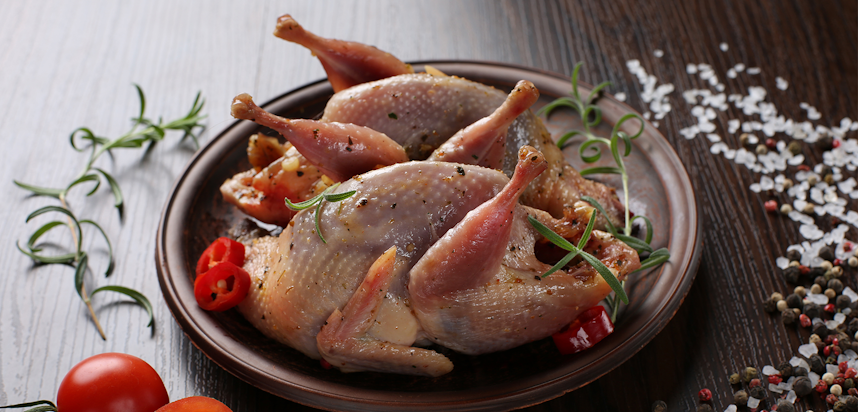
What is wood pigeon?
Wood pigeon is a small bird that eats wild fruit, nuts and acorns, which give it a distinctive earthy flavour and a texture that can be closer to beef than chicken.
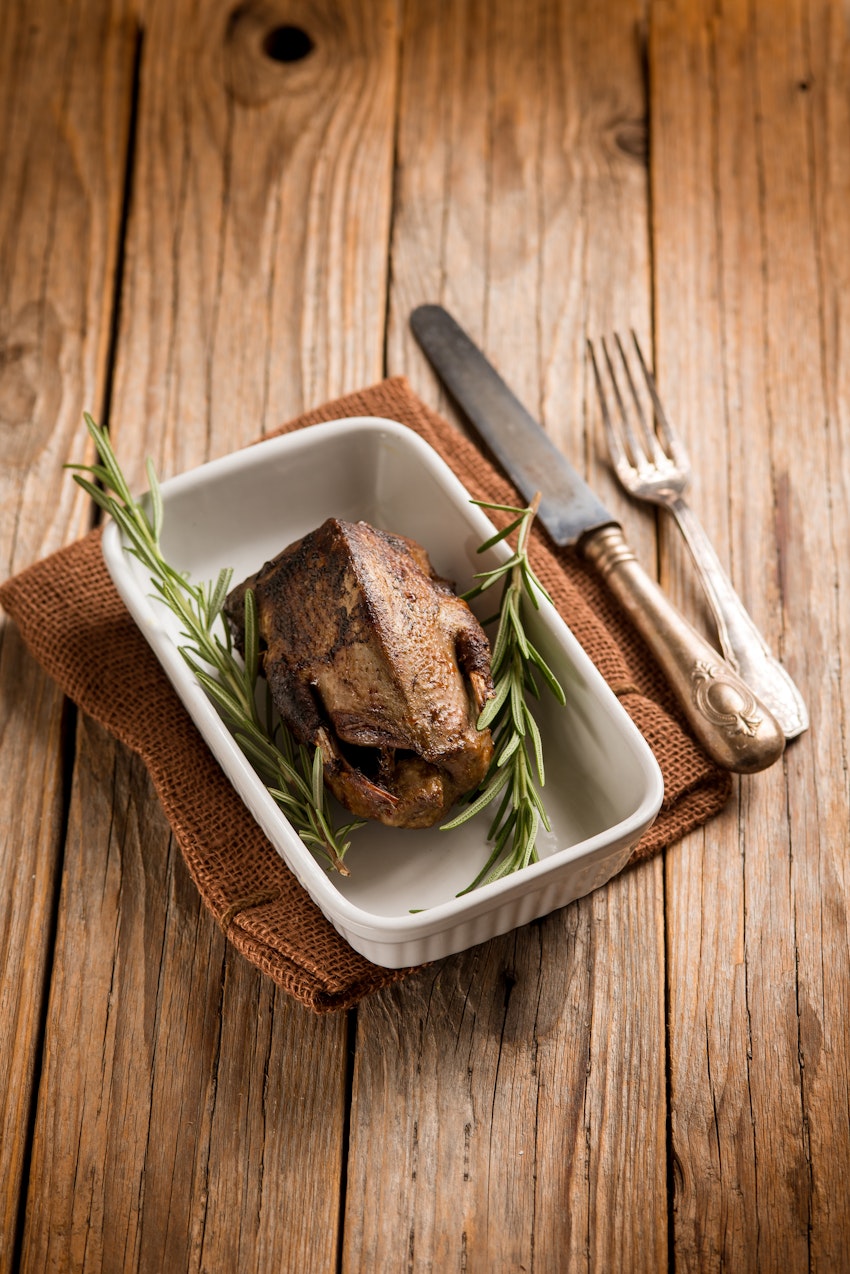
Though classed as a “pest” due to the damage they can cause to crops, wood pigeon is nutritious and a great source of protein. It also contains many minerals, among them iron, which boosts the immune system and provides the body with energy. Wood pigeon is one of the only “game” animals available throughout the year, but as the start of game season approaches in August, it will be lighter than usual (and delicious).
Serving suggestion
Spatchcock wood pigeon is the most popular way to serve this bird, though it can also be sliced and pan-fried. Flavour-wise it pairs well with chicory, and other slightly bitter vegetables or salad leaves, as well as nuts, mushrooms and even fruit like oranges.
Top tip
Wood pigeon makes for an interesting and tender confit - simply cover with duck fat and slow cook for 2-3 hours.
You may also be interested in…
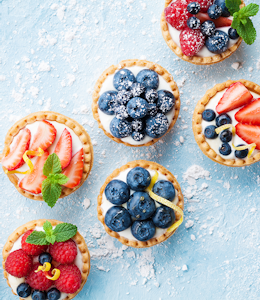
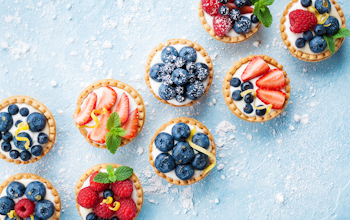
You may also be interested in…
